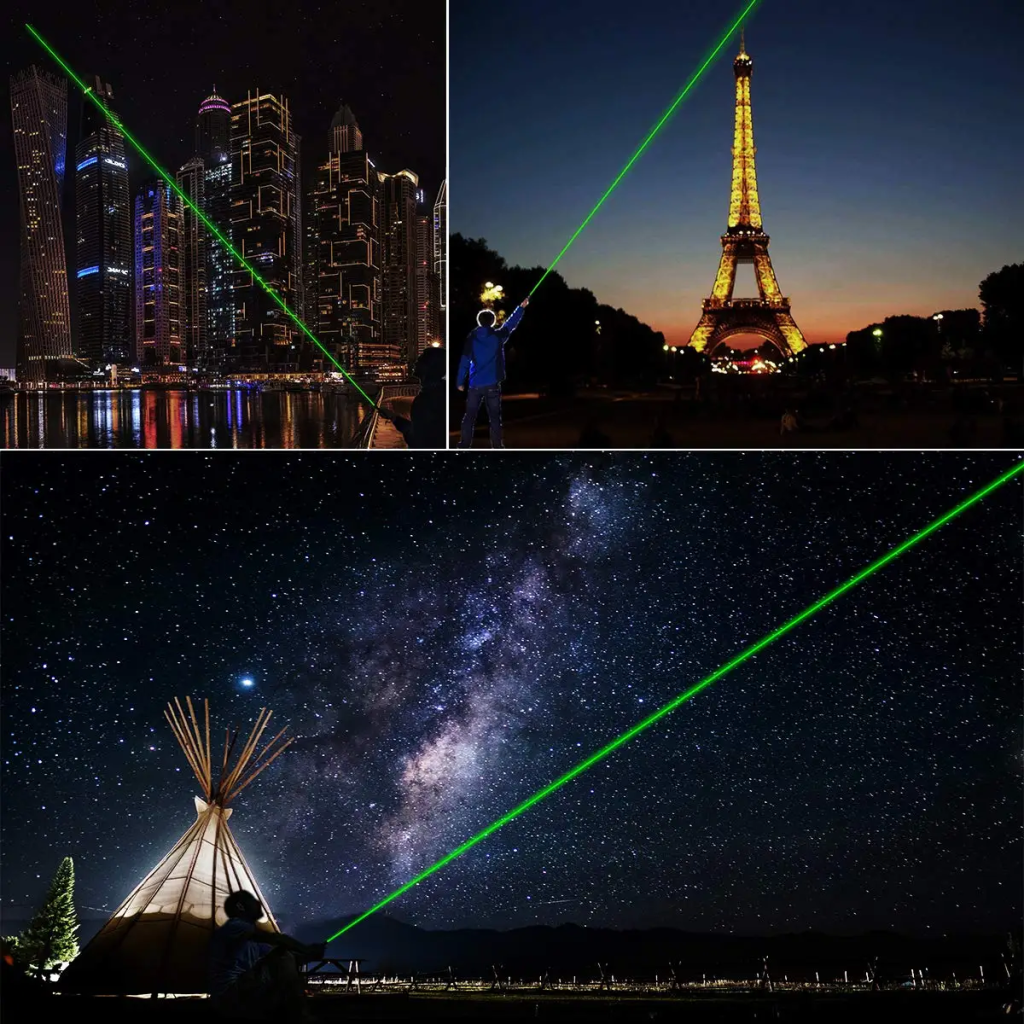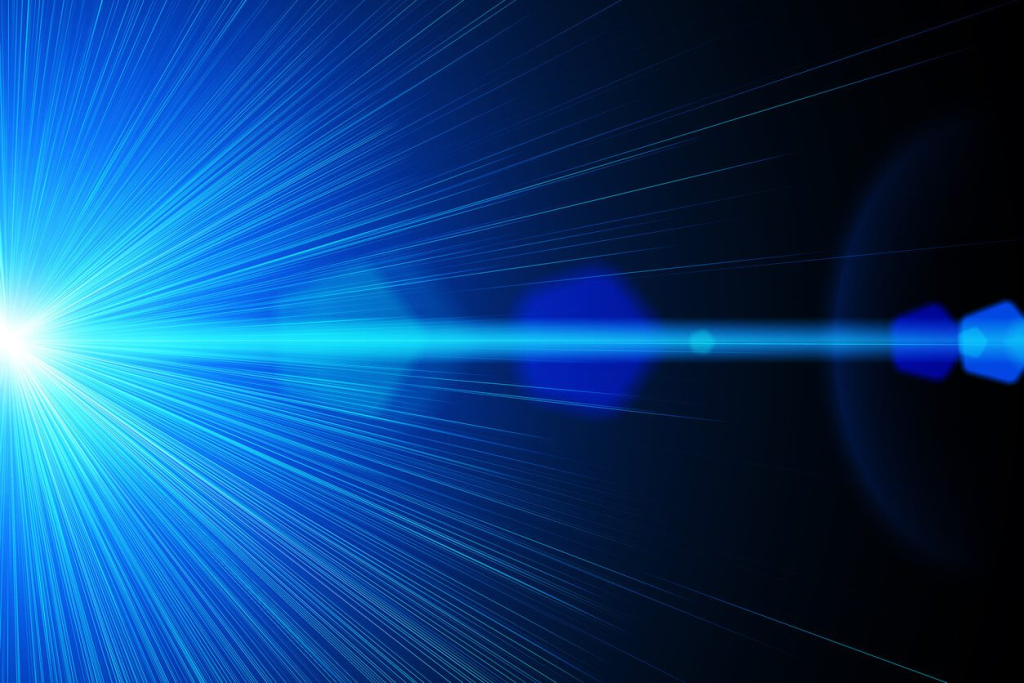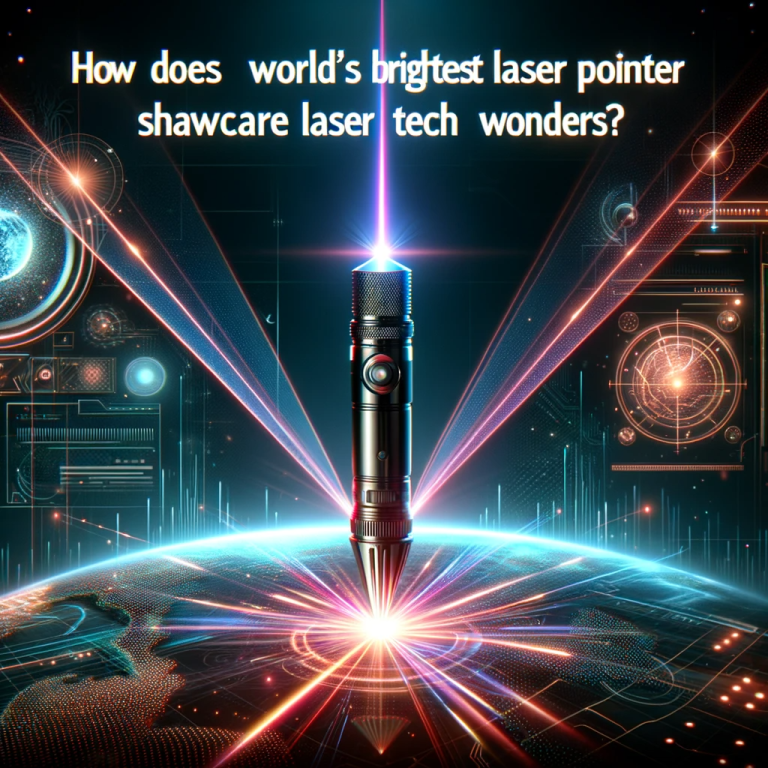Unlocking the Magic of Laser Light: A Colorful Journey Through Its Diverse Applications
Introduction:
The world of laser technology has been an ever-evolving force in various industries, transforming the way we live and work. One of the most remarkable aspects of laser technology is the vivid spectrum of colors it offers, each serving a unique purpose across different domains. In this comprehensive exploration, we will take a deep dive into the mesmerizing realm of laser light, delving into the distinct characteristics and multifaceted applications of red, green, blue, infrared, and ultraviolet laser light. With each color boasting its set of advantages and applications, we will uncover how laser technology continues to shape our world in innovative and unexpected ways.
Understanding Laser Light: Before embarking on our journey through the colorful world of laser light and its myriad applications, it’s essential to grasp the fundamental characteristics that make laser light stand out. Laser light is characterized by its coherency, monochromaticity, and precise focus. These inherent properties render it an exceptionally versatile tool, finding utility across a multitude of fields. With this foundation in place, we can now explore the enchanting spectrum of laser colors and their real-world applications in greater detail.

Red Laser Light: The Versatile Workhorse
Characteristics and Visibility:
When we delve into the captivating realm of red laser light, we encounter a fascinating world of possibilities. Red laser light is renowned for its extended wavelength, a feature that sets it apart in the world of lasers. This long wavelength contributes to its exceptional visibility, particularly in low-light conditions. Its ability to pierce through darkness and still maintain clarity makes it a top choice for applications where visibility is paramount.
Cost-Effectiveness:
Beyond its remarkable visibility, red laser light brings another valuable attribute to the table—cost-effectiveness. The production of red laser light is relatively economical, making it an attractive option for a wide array of applications. This cost-effectiveness has played a pivotal role in its widespread use, ensuring that this workhorse of the laser world remains an indispensable tool in various fields.
Applications:
The versatility of red laser light is reflected in its diverse applications. One of the most common uses of red laser pointers is in the realm of education and professional settings. These handy devices serve as indispensable tools for educators, enabling them to facilitate engaging presentations and highlight key concepts on screens and whiteboards. In the world of academia and corporate boardrooms, red laser pointers have become synonymous with effective communication and knowledge sharing.
Example: In the realm of education, red laser pointers are educators’ trusted allies. They guide students through complex subject matter, helping them focus on essential concepts. Whether it’s highlighting equations in a physics class or emphasizing key historical dates in a history lecture, red laser pointers simplify the learning process, ensuring that information is conveyed with precision and clarity.
Example: In manufacturing environments, red laser levels play a crucial role in aligning conveyor systems. The exceptional visibility and precision of red lasers are instrumental in ensuring materials move smoothly along the conveyor, reducing the risk of jams or misalignments that could disrupt production processes.
Green Laser Light: Brightness and Clarity
Enhanced Brightness and Visibility:
The vibrant, enhanced brightness of green laser light sets it apart from its red laser counterpart. When a green laser beam cuts through the air, its striking intensity is immediately noticeable. This heightened brightness is a result of the laser’s specific wavelength and the unique properties of green light.
Green light occupies a specific part of the electromagnetic spectrum with a shorter wavelength compared to red light. The shorter wavelength allows green laser light to appear brighter to the human eye. This exceptional brightness makes green laser light an ideal choice for a wide range of applications, where visibility and clarity are paramount.
In comparison to red lasers, green lasers are exceptionally visible even in well-lit environments, such as outdoors during daylight or in brightly lit auditoriums. This enhanced visibility is particularly beneficial for a variety of tasks and applications where the content must be clearly and distinctly highlighted or pointed out. This feature makes green laser light indispensable in scenarios where precision and clarity are vital.
Laser Diode Innovation:
The key to the extraordinary brightness of green laser light lies in the innovative choice of using a different type of laser diode. While red lasers have their own unique applications and advantages, green lasers rely on a diode-pumped solid-state (DPSS) design. This design allows for the efficient conversion of infrared laser light into green laser light, resulting in a strikingly bright green beam.
One of the most common DPSS green laser systems uses a neodymium-doped yttrium vanadate crystal to produce an infrared laser at 1064 nanometers. This infrared light is then directed into a potassium titanyl phosphate (KTP) crystal, which efficiently doubles the frequency of the light, producing green laser light at 532 nanometers. The resulting green laser beam is not only bright but also has the advantage of being highly visible to the human eye.
This innovation in laser diode technology ensures that green laser light can outshine red lasers while remaining a cost-effective option. The ability to achieve superior brightness without compromising affordability is a compelling reason why green laser light is the preferred choice in various applications, from astronomy to professional presentations, outdoor activities, and beyond.
Applications:
The enhanced brightness and visibility of green laser light make it an attractive choice for numerous applications. Its vivid clarity has captured the attention of professionals, educators, astronomers, and outdoor enthusiasts alike. Some key areas where green laser light excels include:
Example: Astronomy: Green laser pointers have become invaluable tools during public stargazing events. Astronomers use green lasers to trace constellations, planets, and stars across the night sky with unparalleled clarity. The vivid green beams effortlessly cut through the darkness, allowing enthusiasts to connect with the cosmos in a way that was previously challenging with less luminous red lasers.
Blue Laser Light: A Breakthrough in Luminosit:
Advancing the Boundaries of Brightness:
As we delve into the realm of blue laser light, we encounter a remarkable breakthrough – its exceptional brightness. Blue laser light stands out by offering significantly higher brightness and intensity compared to its red and green counterparts. This extraordinary luminosity has opened up new avenues for blue lasers, enabling them to play a pivotal role in a wide array of applications across various fields.
The distinctive quality that sets blue laser light apart is its exceptional brightness. When a blue laser beam cuts through the air, it exhibits an intensity that is unparalleled. This heightened brightness is achieved through the unique properties of blue light, which falls on the shorter end of the visible spectrum. This shorter wavelength not only contributes to the striking visual appeal but also enhances the laser’s brightness, making it the preferred choice for applications demanding precision, clarity, and an undeniable wow factor.
Direct-Diode Laser Innovation:
The key to the remarkable brightness of blue laser light lies in the technology behind its generation – direct-diode lasers. Unlike some of their counterparts that rely on complex and often costly mechanisms, direct-diode blue lasers offer a more straightforward approach. These lasers, as the name suggests, directly generate blue laser light using semiconductor diodes. This process results in a focused and brilliant blue beam that captivates with its luminosity.
Blue laser light is typically produced at a wavelength of 450-488 nanometers, falling within the blue-to-cyan range of the spectrum. This specific wavelength not only enhances its brightness but also broadens its application potential. The efficiency of direct-diode blue lasers means that they can maintain their brightness while remaining cost-effective, making them a go-to option for various applications.
Blue Laser Light in Applications:
The extraordinary brightness and intensity of blue laser light have unlocked a myriad of applications where precision, clarity, and visual impact are paramount. Here are a few key areas where blue laser light excels:
- Scientific Experiments: The intense brightness of blue laser light is a game-changer in scientific experiments. Researchers and scientists across various disciplines leverage the power of blue lasers to conduct experiments that demand the highest level of accuracy and precision. From spectroscopy and materials science to biotechnology and chemistry, blue lasers are indispensable tools in illuminating and analyzing samples, revealing crucial data that could lead to breakthrough discoveries.Example: In materials science, blue laser light is used for Raman spectroscopy, a technique that provides insight into the molecular composition and structure of materials. The high brightness of blue lasers enhances the accuracy of Raman spectroscopy, allowing researchers to obtain precise data for their studies.
- Industrial Processes: Blue laser light finds applications in industrial processes where precision and clarity are of utmost importance. These lasers are used for tasks like material cutting, alignment, and quality control, ensuring that manufacturing and production processes run smoothly and efficiently.
Invisible Might: Unveiling the Dominance of Infrared Laser Light
While invisible to the human eye, infrared laser light wields a formidable influence across diverse fields, ranging from medicine and industry to defense and beyond. Let’s delve into its invisible powers and the extraordinary utility it brings to our modern world.
The Medical Marvel: Precision Beyond Measure
In the realm of medicine, infrared laser light has triggered a revolution, empowering medical professionals to perform precision procedures that were once mere dreams. At the forefront of this revolution stands LASIK (Laser-Assisted In Situ Keratomileusis), a groundbreaking eye surgery that has transformed the lives of countless individuals. LASIK utilizes the invisible yet potent precision of infrared laser technology to reshape the cornea with remarkable accuracy. The result? Liberation from the constraints of glasses and contact lenses, offering newfound visual clarity and freedom.
Imagine a patient’s journey through LASIK surgery. This life-changing experience is made possible by the exceptional precision of infrared lasers, which meticulously sculpt the cornea to correct vision. Patients who undergo LASIK often describe it as a transformation that liberates them from the constant reliance on glasses or contact lenses. The power of infrared laser light shines invisibly yet brilliantly in the field of ophthalmology.
Defense and Tactical Advantage: Enhancing the Unseen
Infrared laser technology extends its influence beyond medicine, proving invaluable to the military and law enforcement agencies. Here, its role is to enhance night vision capabilities and precision targeting, providing a tactical advantage that can be the difference between success and failure in critical operations. Infrared lasers illuminate the unseen, revealing details and threats in low-light or pitch-dark conditions, where traditional visibility falls short.
Consider a scenario where law enforcement personnel equipped with night vision technology rely on infrared lasers to detect and identify objects and targets in the dead of night. In situations where lives are at stake, infrared laser technology provides the upper hand, enabling rapid and precise responses. It’s a powerful tool that operates unseen but not unnoticed.
Illuminating the Imperceptible: The All-Seeing Eye of Ultraviolet Laser Light
Within the vast spectrum of laser light, there exists a realm hidden from the human eye – ultraviolet laser light. This unseen force brings with it unique properties that have transformed scientific experiments, industrial processes, medical treatments, and analytical instruments. Let’s embark on a journey to unveil its extraordinary capabilities, with a focus on its unparalleled substance detection potential.
The Unseen Specter: Unique Properties of Ultraviolet Laser Light
Ultraviolet laser light, an imperceptible variant, distinguishes itself by its short wavelength, placing it at the high-energy end of the electromagnetic spectrum. This unique property sets it apart from its visible counterparts, endowing it with remarkable characteristics.
Consider a scientific experiment involving the study of complex molecular interactions. Ultraviolet laser light, with its short wavelength, serves as a powerful tool to excite and probe the behavior of molecules, atoms, and chemical compounds. In this role, it unveils intricate details about the electronic structure and interactions within substances. These insights aid researchers in understanding fundamental processes in chemistry and physics, contributing to breakthroughs and advancements.
Revealing the Invisible: Substance Detection and Measurement
One of the most striking feats of ultraviolet laser light is its unparalleled ability to detect and measure substances, even in trace amounts. This capability has revolutionized various industries, offering an all-seeing eye that uncovers hidden information critical for a myriad of applications.
In the field of forensic investigations, ultraviolet lasers serve as indispensable tools, aiding in the detection of crucial trace evidence that would otherwise remain hidden. From fingerprints on various surfaces to minute traces of biological materials, ultraviolet laser light reveals the imperceptible. By illuminating these traces, investigators gain valuable insights and evidence that can be pivotal in solving cases.Imagine a scenario where forensic experts employ ultraviolet lasers to examine a crime scene. Invisible traces of DNA or other substances become visible under the probing eye of ultraviolet light. This transformative capability has played a role in countless investigations, shedding light on mysteries that would have otherwise remained unsolved.
Conclusion:
In summary, the world of laser technology paints a vivid tapestry of colors, each contributing its unique brushstroke to the canvas of human progress. These diverse hues, with their individual characteristics and multifaceted applications, have left an indelible mark on an array of fields and industries, reshaping our world in surprising and transformative ways.So, the next time you encounter the radiant beam of a laser pointer, attend a mesmerizing laser light show, or consider a life-changing medical procedure, remember the rich spectrum of colors that contribute to our ever-evolving world. These colors are not just a reflection of light; they are the vibrant threads woven into the tapestry of human ingenuity, progress, and wonder.
Furthermore, laserpointernews is committed to promoting safety and compliance within the laser pointer community. With a steadfast dedication to ensuring responsible usage, the website provides valuable resources and information on the safe handling and operation of high-powered laser pointers.







Leave a comment